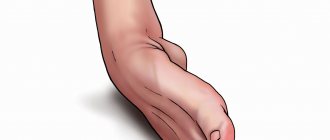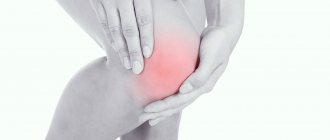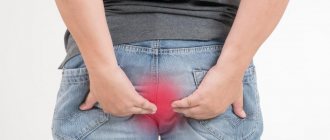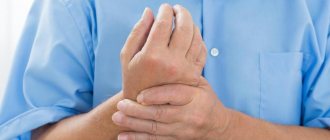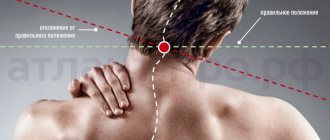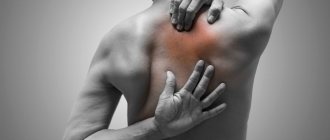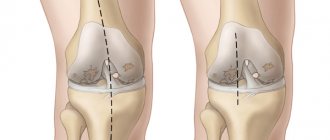Muscle pain in the arms and legs occurs due to intoxication caused by infectious diseases, immunodeficiency, injury, fatigue after excessive physical activity.
Doctors at the Yusupov Hospital take an individual approach to treating patients suffering from muscle pain. Neurologists and rheumatologists conduct a comprehensive examination of the patient, allowing them to identify the cause of the pain syndrome using modern diagnostic methods.
Pain in arms and muscles
After determining the cause of the pain, treatment is carried out:
- etiological – aimed at eliminating the cause of pain;
- pathogenetic – influencing the mechanisms of pain development;
- symptomatic – reducing the severity of pain.
Rehabilitators, if there is pain in the muscles of the arms and legs, use various types of massage, innovative physiotherapeutic procedures, and do acupuncture. If the cause of pain in the arms or legs is a disease of the spine, gentle manual therapy techniques are used. Patients exercise on mechanical and computerized simulators from leading global manufacturers. A team of rehabilitation clinic specialists collectively draws up a program for strengthening the patient’s muscular corset.
A sign of a wrist sprain is pain in the muscles of the forearm. It occurs for the following reasons:
- after exercise;
- with deformation of the wrist joint;
- due to a domestic injury;
- due to performing the same movement with the hand due to the characteristics of the profession.
Provoking factors include advanced age, damage to the integrity of the tendons, and inflammation in the tissues located near the joint. If a rupture of the wrist ligament is suspected, traumatologists examine the site of injury. The doctor asks about possible causes of pain. Comprehensive diagnostics includes:
- general blood analysis;
- examination of synovial fluid obtained by puncture of the wrist joint;
- radiography;
- magnetic resonance imaging;
- ultrasonography.
First aid for a sprained wrist ligament consists of sequentially performing the following measures:
- the patient should be seated or laid down;
- immobilize using an elastic bandage or improvised means (shawl, scarf);
- if there is increased mobility of the injured joint, apply a splint;
- apply an ice compress to the damaged area;
- Give the patient an anesthetic and take him to the emergency room.
Treatment depends on the severity of the injuries. The doctor administers pain relief to the injured limb. In severe cases, novocaine blockades may be needed. During the rehabilitation period, patients are prescribed physiotherapeutic procedures, manual therapy, and therapeutic exercises.
Features of therapeutic actions
A combination of various therapeutic effects and manipulations with the body leads to quick relief from the disease. Treatment is carried out in the following areas:
- Fixation of the affected area;
- Physiotherapeutic methods;
- Therapeutic exercise, massage course;
- Use of medications prescribed by your doctor.
Treatment with drugs is aimed at eliminating pain in the wrist joint. There are a lot of drugs for pain relief, so there is a division into subgroups that alleviate symptoms and those that directly treat.
The first group includes a number of drugs that have an analgesic effect. We are talking about Ketanov, Ketonal and their generics. The second group includes a number of anti-inflammatory drugs such as Ortofen. They are prescribed to patients with osteoarthritis and joint arthritis. The third group includes chondroprotectors. They are used by patients with arthrosis when the goal is to restore the normal structure of the joints. A special group of drugs containing calcium stands out. We are talking about Kalcemin. The last group includes antirheumatic drugs that stop the irreversible consequences of the disease and steroid hormones.
Surgical intervention to treat pain in the left wrist is extremely rarely required - surgery is prescribed in exceptional cases.
Pain in the arms from the shoulders to the elbow - causes
Pain in the shoulder muscles occurs due to inflammation of the bone tissue and joints, pathology of the periarticular structures - muscles, ligaments, tendons. Pain syndrome may be a concomitant background symptom of an underlying disease that is not directly related to the musculoskeletal system. That is why doctors at the Yusupov Hospital determine the cause of the pain before starting treatment.
Periarticular pain in the shoulder is most often provoked by instability of the joint, which can be caused by the following factors:
- overexertion, sprain of the shoulder girdle during intense strength training;
- damage, inflammation of the joint capsule;
- stretching of the muscles located near the joint capsule;
- damage to the cartilage of the glenoid cavity, lack of support for the biceps muscle.
Tendonitis is inflammation of the tendons that surround the shoulder joint. Damage to the tendon inevitably leads to pain in the shoulder muscles. The rotator cuff, biceps, infraspinatus, and subscapularis muscles are affected. Pain may occur in the infraspinatus shoulder muscle. The cause of pain is often calcific tendonitis, in which calcifications accumulate in the tendon tissue. Pain in the muscles of the arm on the inside may occur due to inflammation of the tendon of the inner shoulder.
Bursitis is an inflammation of the joint, closely associated with overexertion and sports injuries. In addition to pain in the shoulder, swelling occurs in the area of the joint capsule. Often the pain radiates to the arm, limiting range of motion.
Frozen shoulder syndrome or retractile capsulitis is a sign of reflex dystrophic damage to the shoulder joint capsule with parallel damage to bone structures in the form of osteoporosis. A symptom of the disease is pain in the shoulder muscles.
With glenohumeral periarthrosis, the nature of the pain syndrome can vary from acute, intensifying pain to aching, constant pain. It does not subside with rest, may be accompanied by insomnia, and noticeably limits movements of the upper limb.
Myofascial pain syndrome is a typical disease of muscle tissue in various areas of the body, but its favorite location is the shoulder girdle and lower back. Muscle pain that accompanies tense muscles develops in clearly defined places - trigger points. The cause of pain in the shoulder muscles can be osteochondrosis of the cervical spine, when a secondary complication develops - radiculopathy.
Pain in the shoulder muscles can be caused by the following diseases:
- impingement syndrome;
- polymyalgia rheumatica;
- neuralgic amyotrophy, myelopathy;
- herniated disc of the cervical or thoracic spine.
Pain in the shoulder muscles can be a reflected symptom of diseases of the respiratory system, diaphragm, heart, and liver.
How to relieve shoulder muscle pain? After identifying the cause of pain in the shoulder muscles, doctors at the Yusupov Hospital neutralize all factors that provoke pain - they immobilize the arm and shoulder, and often recommend complete rest. Complex therapy is prescribed, which includes:
- non-steroidal anti-inflammatory drugs in tablets, injections and in the form of ointments, gels;
- compresses with a 30% dimexide solution, local anesthetics and anti-inflammatory drugs.
Doctors give corticosteroid injections for arm muscle pain. Homeopathic medicines – traumeel, zell – are injected around the joint. With the help of physiotherapeutic procedures, nutrition of the periarticular zone is improved and metabolic processes are activated. A complex containing B vitamins and microelements is prescribed.
At the rehabilitation clinic, specialists perform muscle massage, including joint development. Therapy for mild muscle pain that develops as a result of muscle strain lasts no more than 3-5 days. Adjusting training exercises, rest and a gentle, warming massage helps relieve pain in the arm muscles.
In other cases, contact the Yusupov Hospital. Doctors will conduct a comprehensive diagnosis, dynamic examination (monitoring the condition of the shoulder girdle in motion) and prescribe a course of medications that reduce the perception of pain, improve the trophism of muscle fibers, and neutralize inflammation.
Prevention in simple algorithms
To prevent wrist pain, you should follow some simple recommendations:
- moderate load and regular strengthening exercises for muscles;
- at the first manifestations of discomfort, you need to reduce the load on the joint;
- when grasping objects, it is recommended to use the entire hand, and not just the fingers;
- when working with vibrating tools, it is necessary to use special vibration-absorbing pads;
- for people who work at a PC for a long time, it is necessary to take regular breaks (every 30 minutes) to change the position of the spine and ensure rest of the hands;
- during sports it is necessary to fix the wrists with the help of special devices;
- hot baths to normalize blood circulation.
Any pain in the wrist of the left hand requires attention, since it can become a kind of warning to the body about the occurrence of any abnormalities. Only timely contact with a specialist will avoid unforeseen consequences.
FAQ
Why can pain radiate to the elbow from the neck area?
Most often, this is associated with cervical osteochondrosis.
Why does pain appear in the bend of the elbow?
The reasons may be different. This is often associated with tunnel syndrome - compression of the ulnar nerve by swollen tissue due to injury or inflammation.
If you have pain in the elbow joint, which doctor should you contact?
It is worth starting with a therapist, and after the examination he will refer the patient to an orthopedic traumatologist or rheumatologist.
Could soreness in the elbow area be muscle related?
Maybe. In case of injuries or hypothermia, muscles are injured and inflammatory processes develop in them - myositis. Muscles can also be damaged by various joint pathologies; they develop spasms and atrophy (decrease in volume), which is accompanied by pain.
What are the causes of redness and pain in the elbow area?
Redness and swelling of tissue are signs of inflammation - arthritis, bursitis, synovitis or epicondylitis.
Cubital tunnel syndrome - what is it?
This is compression of the ulnar nerve in a narrow anatomical canal. Normally, the nerve passes freely through such channels, but when the surrounding tissues swell due to various inflammatory processes, it becomes compressed, accompanied by pain.
Elbow pain is not a death sentence. If it doesn’t go away, then you shouldn’t endure it. It is better to consult a doctor as soon as possible, find out what caused the pain and undergo a course of treatment. You can consult a doctor even with long-term pain, he will help you in any case.
Literature:
- Zorya V.I., Babovnikov A.V. Elbow joint injuries: a guide. M.: GEOTAR-Media, 2010; 464.
- Mironov S.P., Burmakova G.M. Damage to the elbow joint during sports. M.: Lesar-art, 2000; 192.
- Hotchkiss R. Epicondilitis – lateral and medial. Hand clin., 2000;16; 505–8.
- Graham RG, Hudson DA, Solomons M. A prospective study to assess the outcome of steroid injections and wrist splinting for the treatment of carpal tunnel syndrome. Plast Reconstr Surg. Feb 2004;113(2):550–6.
Sign up for a free initial appointment
The nature of the sensations is half the diagnosis
The nature of the pain from the elbow to the hand can be different: aching, pulling, burning, stabbing.
It can occur at rest, during exercise, or when performing certain movements. It can be one-time occurrence, regularly recurring and continuous. Sometimes painful sensations are accompanied by dysfunction of the joints of the hand or fingers. In order to establish a diagnosis, the doctor needs to know all these features: their combinations allow, in some cases, to accurately establish the diagnosis without additional expensive studies.
How to find out the diagnosis
In order to establish a diagnosis for pain from the elbow to the hand in the right or left arm, first of all, examination data is used: many diseases and syndromes give an unambiguous reaction to certain motor tests, which easily makes it possible to establish a diagnosis.
X-ray or ultrasound examination can be used to clarify the diagnosis. Blood tests are rarely ordered. Diagnosis is carried out by a neurologist, a surgeon, and in rare cases, a cardiologist and an endocrinologist are involved.




